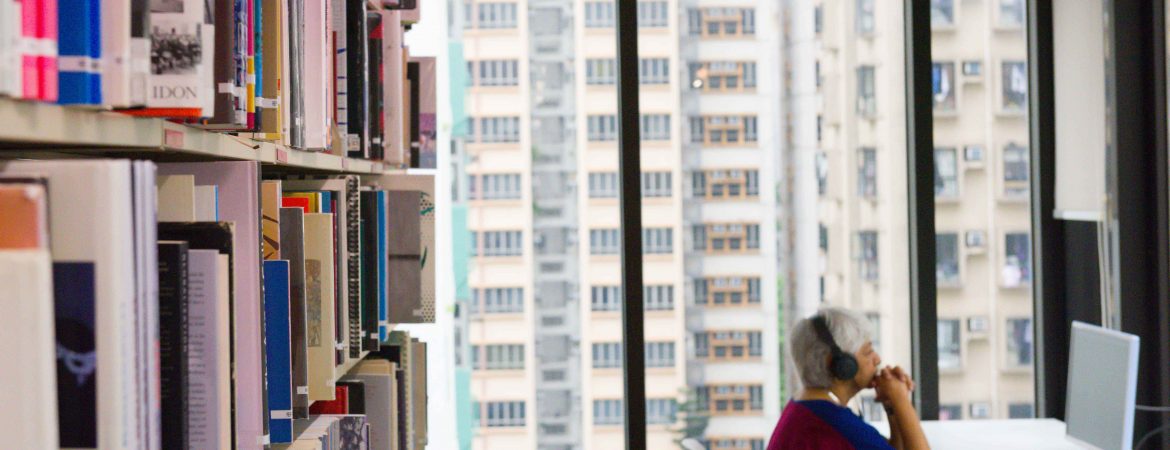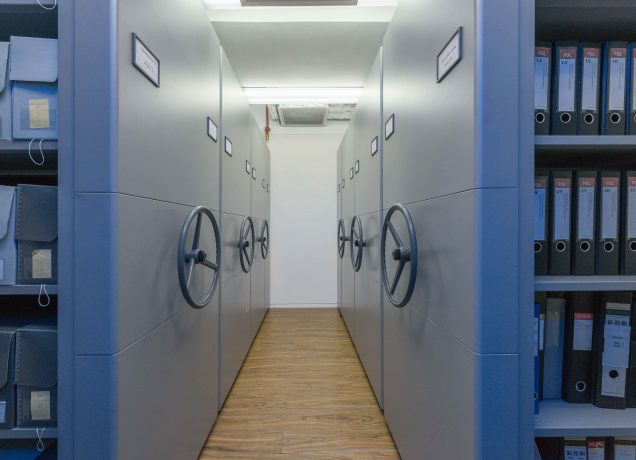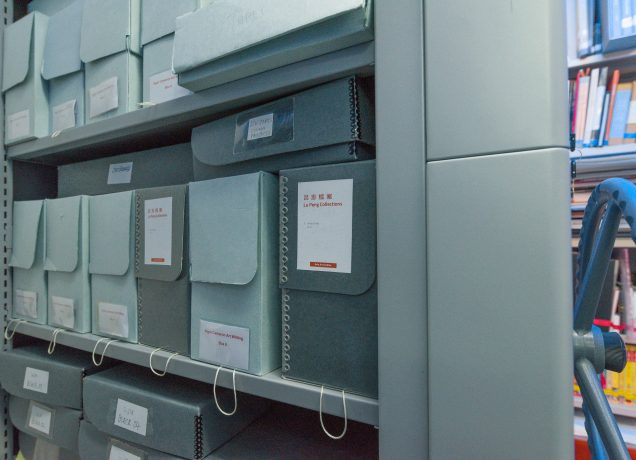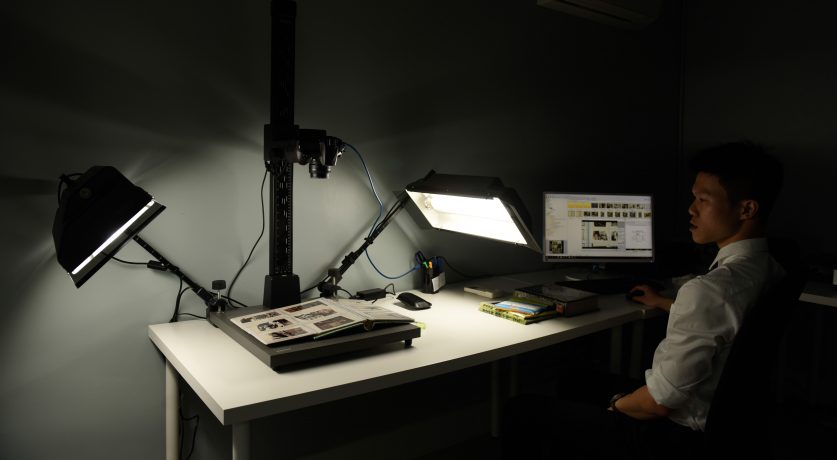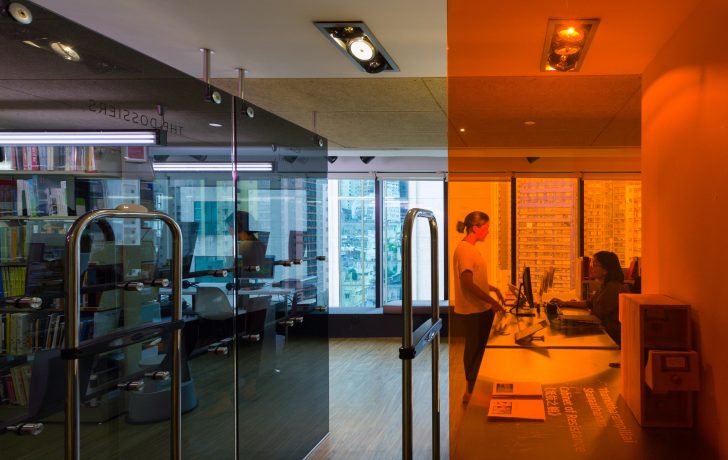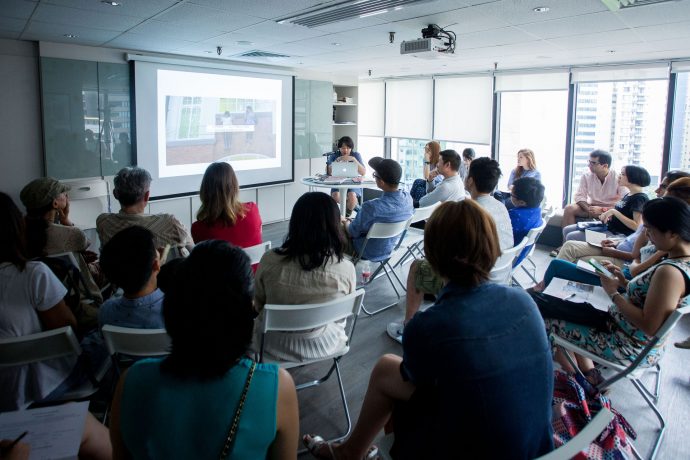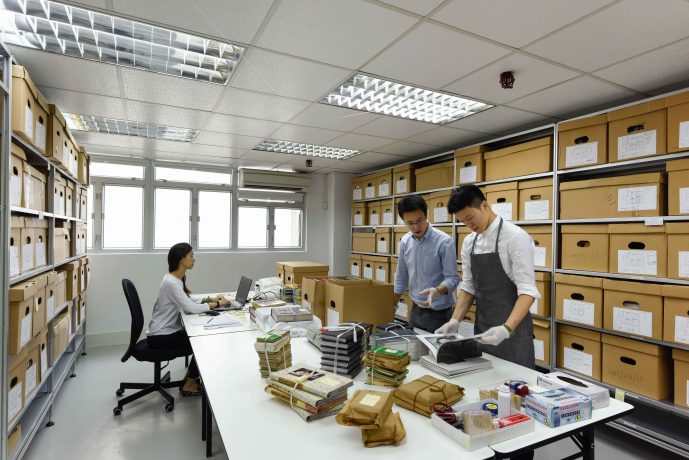The neighborhood of Sheung Wan in Hong Kong, abuzz with startup activity, hipster cafes and boutiques, trendy restaurants, quaint antique shops, and edgy galleries, additionally houses a uniquely significant library. Considered a hidden gem of an institution by art enthusiasts, industry professionals and students alike, the Asia Art Archive (AAA) library is certainly the only one of its kind in the world.

Unassumingly located in the middle of a commercial office building on the well-known Hollywood Road, this is a facility that needs to be sought out, not chanced upon. Visitors are treated to what may be an unexpected surprise of large glass windows illuminating a contemporary space, conducive to studying and making discoveries. Set in a serene environment, the library comprises over 50,000 records, including exhibition catalogs, monographs, audiovisual material, rare periodicals, individual archives, leaflets, and press clippings, all pertaining to the history of contemporary Asian Art.
This independent non-profit organisation was co-founded by Claire Hsu and Johnson Chang in 2000 in response to a lack of documented material about multiple recent histories of art developing in the region. With global interest generated in Asian art after the boom of the art market, their goals are very much relevant and critical to sustaining and growing this curiosity. Their objective is to collect, preserve, and make accessible information on contemporary Asian art, in order to facilitate understanding, research and writing in the field.
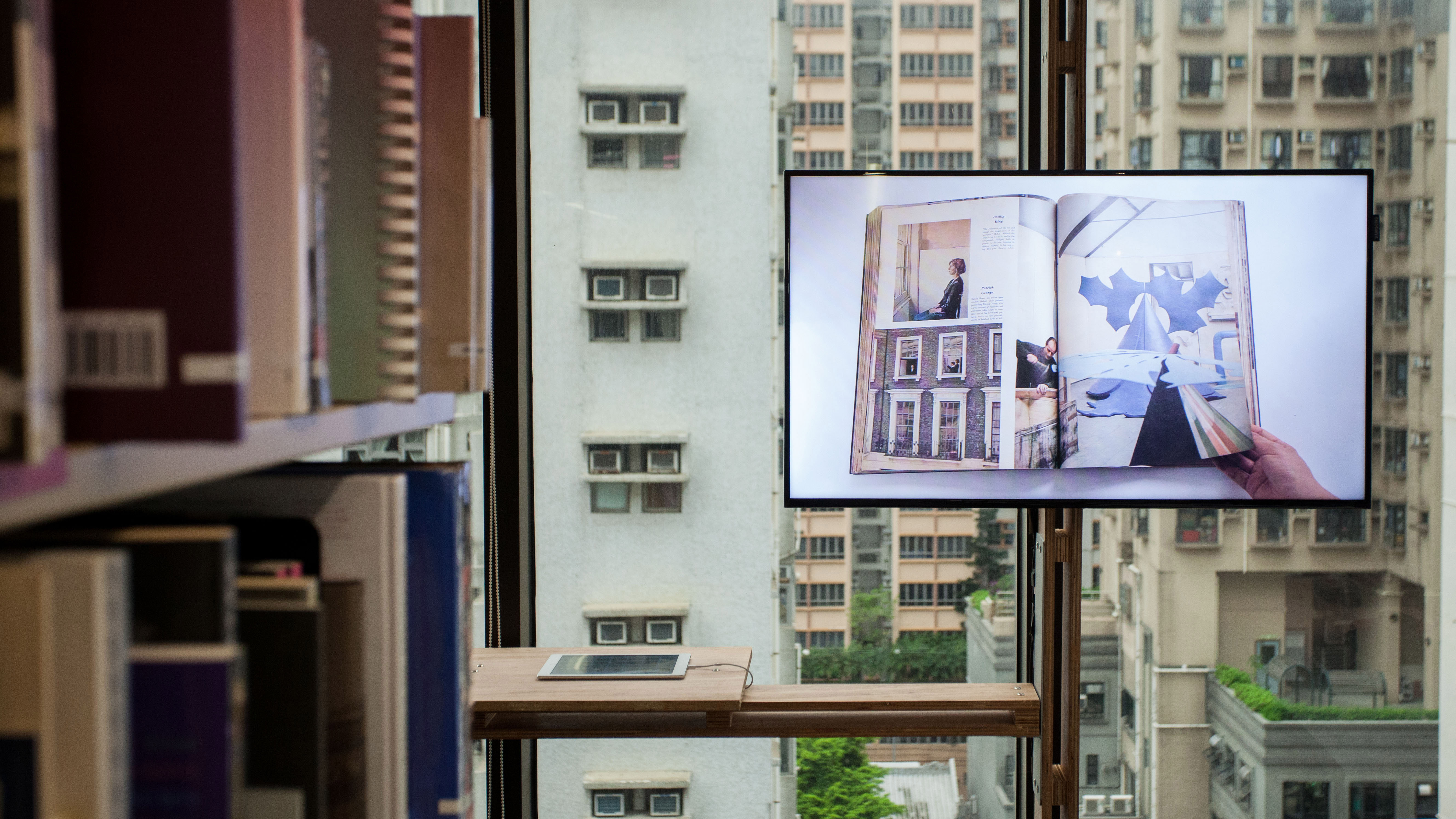
The content of the accumulated material is organized around areas referred to as content priorities. This includes examining the collection thematically and documenting how art history has been in written in Asia through the lens of writing and exhibitions. This is then presented in a series of ongoing research projects and exhibitions.
The current exhibition on view, Lines of Flight: Nilima Sheikh Archive, chronicles the significance of traveling across national borders, and artistic techniques in her practice. Alongside her tempera paintings, a selection of traditional stencils she used to create them are also on display, demonstrating a critical need to preserve traditional art forms. Inspiration for her work and process is revealed through a compilation of visual and written sources ranging from miniature paintings to poetry by Mahmoud Darwish to film footage taken by Sheikh’s mother in the 1950s during family trips to Kashmir.

Similarily, the Salima Hashmi Archive is a selection of writing by the Lahore-based artist, curator, educator, and organizer Salima Hashmi, and archival materials she collected throughout her career. One of the more recent research projects conducted by AAA, this includes an assortment of rare documents from the 1950s to 1960s such as leaflets, exhibition catalogs, and invitation cards to plays, music events, and other cultural activities. The Ha Bik Chuen Archive Project, another recently launched venture, is a three-year process to make accessible materials the late Hong Kong artist collected over a period of forty years.
Other content priorities include comparing the traditional and contemporary in parallel, studying emerging art practices such as performance art, and addressing overlooked and underrepresented topics, such as the representation and participation of women in art. AAA’s booth at Art Basel in Hong Kong 2018, Women Make Art History, sought to provoke discussion about women in art in Asia. As part of their first appearance in the region, the Guerrilla Girls present new work that examines the status of women in the Hong Kong art world. They also hosted an interactive program, a Wikipedia Edit-a-thon, on female artists and practitioners in Asia, organised in collaboration with M+.
Community outreach, participation and engagement focused on enriching conversations around art factor largely into AAA’s initiatives. In addition to artist residencies and research grants, they organize talks, workshops, conferences, and symposia not only for art professionals, educators, academics, and artists, but also the public. Accessibility is a fundamental priority, becoming more prominent through the digitizing of the collection and increasing online presence.
With the most comprehensive, fastest growing collection of information pertaining to Asian art, while accounting for the region’s vastness and diversity, the Asia Art Archive has established itself as the ultimate resource for the subject matter. The remarkable library which is open to the public, is certainly worth a visit, for specific research needs or even a general browse, offering a range of viewing material from rare videos to archived catalogs. Enthusiasts, aficionados, and practitioners of contemporary Asian art have a unique haven where their interests and curiosities can be satisfied.
